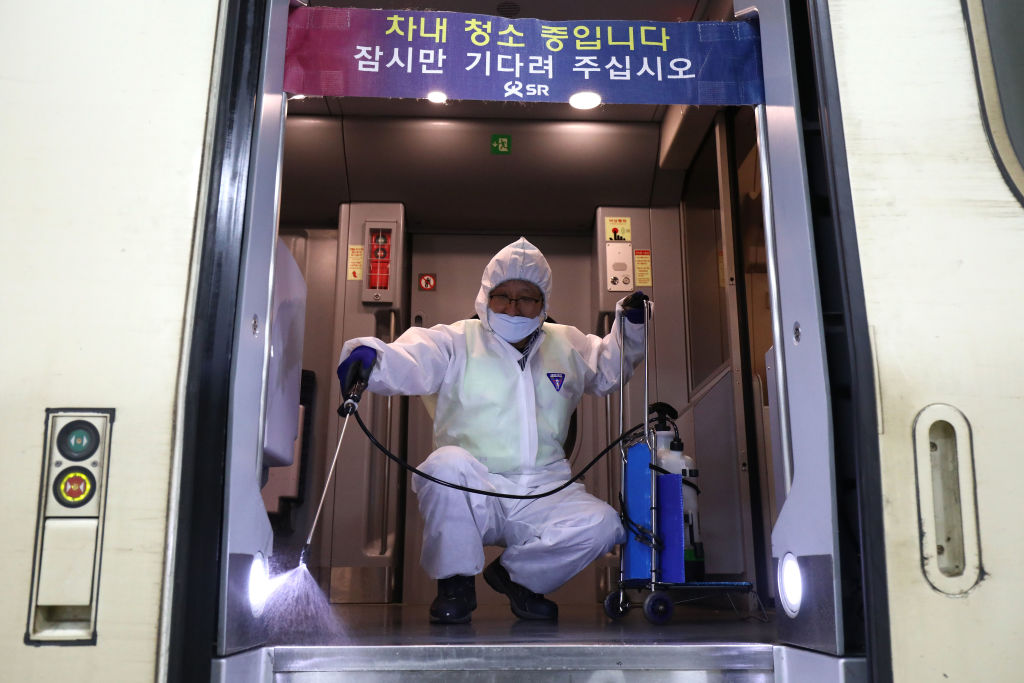As of Friday (Feb. 21), South Korea has a total of 156 confirmed Covid-19 cases.
One particular city in southeastern South Korea, Daegu, has seen a staggering number.
And it appears that nearly all of its 111 cases (between Daegu and its neighbouring North Gyeongsang province, according to the Korea Herald) can be traced back to a single patient: South Korea's Patient #31.
Who is Patient 31?
Patient 31 is a 61-year-old woman.
Business Insider reported that she had not travelled to mainland China or been in contact with anyone who did. It is unclear how she was infected.
She attended the Shincheonji Church of Jesus, a fringe religious faction that is based in Daegu, and reportedly refused twice to be tested even though she had a fever because she had not travelled to mainland China recently.
According to the Korea Herald, she went to the church on four occasions. Two of these days, Feb. 9 and 16, were after she started showing symptoms of the virus.
She eventually tested positive on Feb. 18.
Dozens of churchgoers infected
Following this, Feb. 20 saw a huge uptick in confirmed cases in South Korea — in just one day, it more than doubled its tally to 104 from 53.
More than 40 of these new cases were in Daegu, with 28 of these individuals having attended the same church as Patient 31.
The Korea Centers for Disease Control and Prevention (KCDC) called this a "super-spreader" event.
The church has 12 branches across the country, the Korea Herald reported. And as of Friday (Feb. 21), a total of 43 of South Korea's confirmed cases are linked to the Daegu branch of the church, where Patient 31 attended church services.
Since then, the church has shut its facilities across South Korea and encouraged churchgoers to partake in online prayer sessions instead.
The Korea Herald reported on Thursday that an estimated 1,000 churchgoers attended the same church services. Among them, around 90 have reported symptoms of the virus so far.
So, how did it 'super-spread'?
What were the circumstances under which more than 40 people in the same church were infected?
Business Insider reported that South Korean media was able to interview a churchgoer to find out more about the church services and practices of the churchgoers.
The source told the South Korean newspaper that Patient 31 was in close proximity with other churchgoers during prayer services on Feb. 9 and 16.
At the prayer sessions, churchgoers sit close enough to "rub their shoulders" with each other. During these sessions, people who donned face masks were allegedly told to remove them.
After the service, they would converse in small groups or organise potluck parties.
The churchgoers were told to stay home if they had travelled internationally, or if they were feeling unwell.
However, SCMP reported that Patient 31 did not stop attending these services because she assumed she was suffering from a common cold.
But, the WHO says not enough evidence to confirm 'super-spreading' event yet
According to the New York Times, the term "super-spreading" is not used as a technical term by the World Health Organisation.
It is used, NYT reported, to imply that a particular person may be "inherently more able than others to pass on disease".
"Super-spreading", WHO reportedly said, can be linked to a person or event. The spread of a virus depends on a range of environmental and epidemiological factors leading to transmission in clusters.
Despite apparent awareness of the Daegu church cluster of infected individuals, the WHO spokesperson was quoted saying, "We don't have enough evidence to confirm a case involving a super-spreading event in the COVID-19 outbreak."
Okay then.
Top photo via Getty Images.
If you like what you read, follow us on Facebook, Instagram, Twitter and Telegram to get the latest updates.
